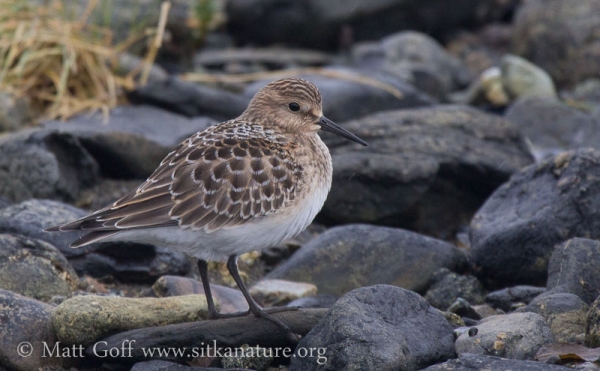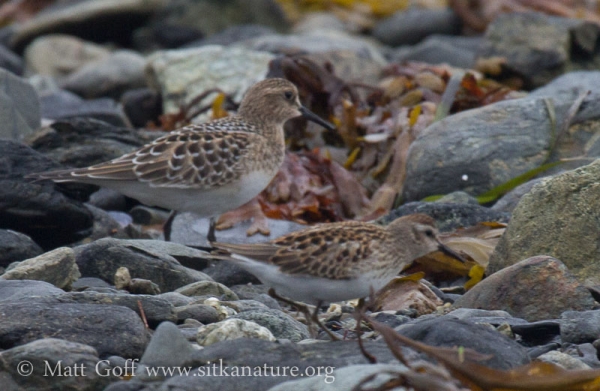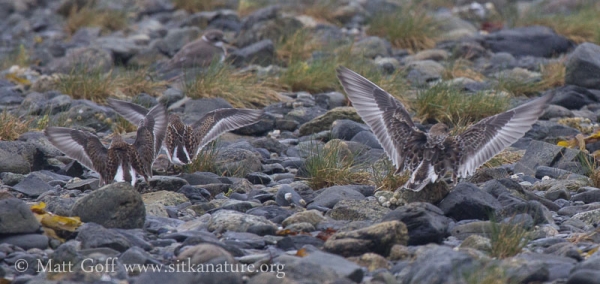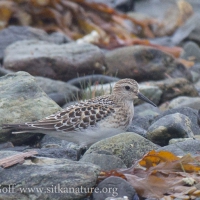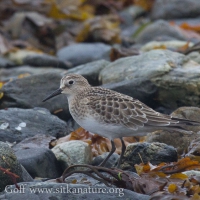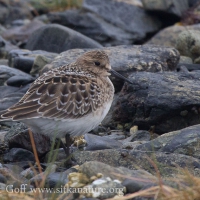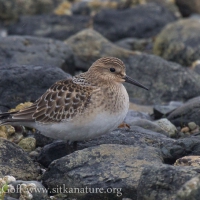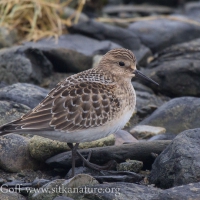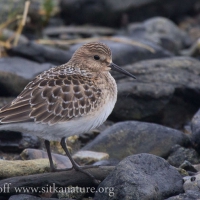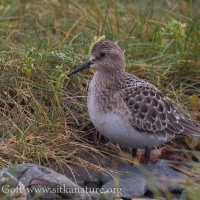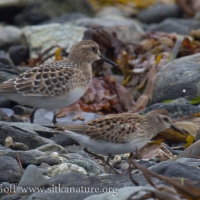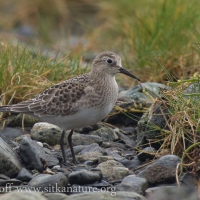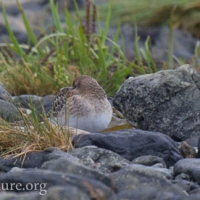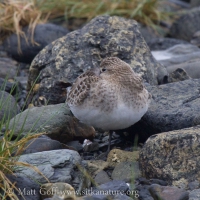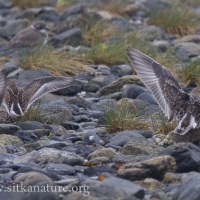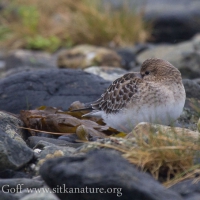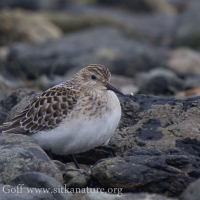A couple of days ago was only the fourth time I’ve seen a Baird’s Sandpiper, and it was the first time I saw more than one.
The tide was on its way up, though still out quite far (it had been a minus tide maybe an hour before) as I made my way from the beach access near the river mouth toward the access at the sea otter sign bench (formerly the battle site sign bench, though signs have just recently been changed). This time of year it’s pretty typical to have lots of gulls (present), a fair flock of Black Turnstones (present), and scattered smaller shorebirds including Least Sandpipers and Semipalmated Plovers. I was not surprised when a flock of 10 or so small shorebirds took off from in front of where I was walking and landed a short distance away. I assumed they were probably all Least Sandpipers, or perhaps a mix of Least and Western Sandpipers. Checking more carefully with my binoculars in order to get a better count and confirm the presumed id, I was a little surprised when I saw a bird that didn’t seem right.
Least Sandpiper (front) foraging with Baird’s Sandpiper (behind)
It looked sort of like a Least Sandpiper, but with one right next to it, it was easy to see the difference in size. It had black legs, so I tried to shoehorn it into being a Western Sandpiper, but the coloring was wrong, and it was too big for them as well. I became aware that there were actually several of these mystery birds, but I just couldn’t get them to fit into any of the commonly occurring migrants here. I found myself wondering if they were some sort of variant I just hadn’t seen before of a common species.
When faced with such uncertainty, my impulse is to take pictures and try to figure it out later. Although sometimes I might miss things as a result of this practice, I think the overall the practice has served me well and I’ve learned far more than I would have otherwise. In this case I grabbed a few shots, and was later able to confirm the identity by sending them on to more knowledgeable birders with my best guess.
Still not knowing what they were, I recorded them as Western Sandpipers with the intention of changing that when I figured it out at home. I estimated there were 5 of these shorebirds, and continued on.
As I neared home and was reflecting on the birds and still trying to fit them into one of the species I’m most familiar with. I noticed the thought ‘average sandpiper’ come to mind, and let it go as it didn’t seem to fit Dunlin (which is the species I had been considering). It was only later after I had a chance to look in the books and realized Baird’s Sandpiper was the most likely candidate that I remembered I’ve described Baird’s Sandpipers as being like the average small sandpiper. Their bill isn’t too long and not too short, they’re in the middle size-wise, they have black legs (like most do), their color pattern is kind of middling brown, with nothing in particular that seems (to me) to stand out. It seems my subconscious may have been trying to tell me what they were, but my conscious mind was stuck on the common species.
In addition to the size difference, the other thing that stuck out to me about the Baird’s Sandpipers was the pale edging on the back and wing feathers as well as the overall brown tone lacking in any real rufous coloring (like I would expect in a Western Sandpiper).
Baird’s Sandpipers have only been reported in Sitka a few times, with most of those in the spring. J. Dan Webster reported seeing them in August 1937 and July 1938, Marge and Tedin’s records have reports in August, late October and early November from 1981.
I checked again yesterday, and did not find them down at the beach.
Questions:
- How often are Baird’s Sandpipers actually moving through the Sitka area? (annual in small numbers for short stays? Typically just flying over and not landing? Less than annual?)
- Does the migration route of Baird’s Sandpipers differ significantly between spring and fall? (it does for many migrant species)
- Is it just random they showed up here this year, or was there something about the weather that influenced it?
